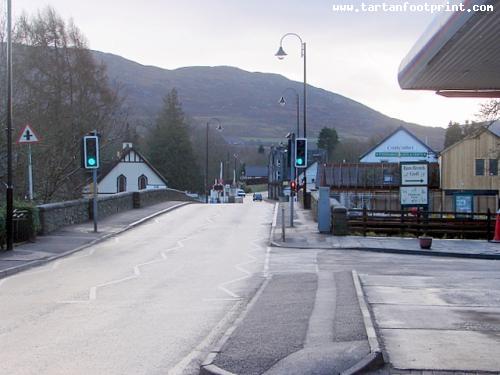You seem to be using an older version of Internet Explorer. This site requires Internet Explorer 8 or higher. Update your browser here today to fully enjoy all the marvels of this site.
January 2, 2019 by Alexander Meldrum
Scotlands Citys & Towns
Fort Augustus
Fort Augustus is a settlement in the parish of Boleskine and Abertarff, at the south west end of Loch Ness, Scottish Highlands.
The village has a populati...Scotlands Citys & Towns
Fort Augustus
Fort Augustus is a settlement in the parish of Boleskine and Abertarff, at the south west end of Loch Ness, Scottish Highlands.
The village has a population of around 646 (2001); its economy is heavily reliant on tourism.
History
The Gaelic name for the modern village is Cille Chuimein and until the early 18th century the settlement was called Kiliwhimin. It was renamed Fort Augustus after the Jacobite Rising of 1715.
The accepted etymology is that the settlement was originally named after Saint Cummein of Iona who built a church there.
Other suggestions are that it was originally called Ku Chuimein after one of two abbots of Iona of the Comyn clan,
whose badge Lus mhic Chuimein refers to the cumin plant, or that it was called Cill a' Chuimein ("Comyn's Burialplace") after the last Comyn in Lochaber.
In the aftermath of the Jacobite rising in 1715, General Wade built a fort (taking from 1729 until 1742) which was named after the Duke of Cumberland. Wade had planned to build a town around the new barracks and call it Wadesburgh.
The settlement grew, and eventually took the name of this fort. The fort was captured by the Jacobites in March 1746, just prior to the Battle of Culloden.
In 1867, the fort was sold to the Lovat family, and in 1876 they passed the site and land to the Benedictine order. The monks established Fort Augustus Abbey and later a school.
The school operated until 1993 when it closed owing to changing educational patterns in Scotland causing a decline in enrollment.
The monks employed Tony Harmsworth to devise a rescue package which saw the site converted into the largest private heritage centre in Scotland
which operated between 1994 and 1998, however the heritage centre failed to generate sufficient profit to maintain the buildings.
In 1998 the monks abandoned the site, and it reverted to the Lovat family which in turn sold it to Terry Nutkins.
He also owned the Lovat Hotel that stands on the site of the old Kilwhimen Barracks, one of four built in 1718. This site houses the west curtain wall of the old Fort, intact with gun embrasures.
The Lovat was originally built as the local Station Hotel.
Infrastructure
The village was served by a rail line from Spean Bridge to a terminus on the banks of Loch Ness from 1903 until 1933, built by the North British Railway, but initially operated by the Highland Railway.
The Caledonian Canal connecting Fort William to Inverness passes through Fort Augustus in a dramatic series of locks stepping down to Loch Ness. Also The village is served by the Cill Chuimein Medical Centre.
The village has both a primary school and a secondary school – Kilchuimen Primary School and Kilchuimen Academy – which share a campus.
Climate
As with the rest of the British Isles and Scotland, Fort Augustus experiences a maritime climate with cool summers and mild winters.
As with much of the surrounding area, sunshine levels are low, around 1000 hours per annum, and temperatures unpredictable.
Fort Augustus holds the UK's joint lowest May temperature record of -9.4 °C (15.1 °F), also the latest point in run up to summer such a temperature has been recorded suggesting it can become a frost trap on calm clear nights due to its valley location.
That same low lying topography can also give rise to some high temperatures on occasion - Fort Augustus held the UK daily high temperature record for 16 December for almost 80 years.
Go to Wikipedia for full History
In this photo:


